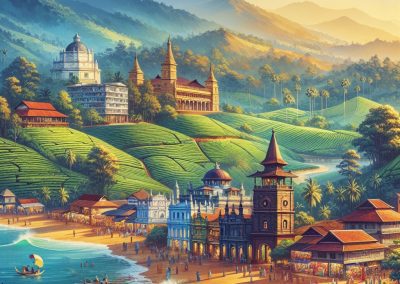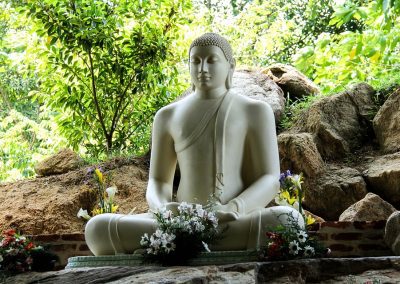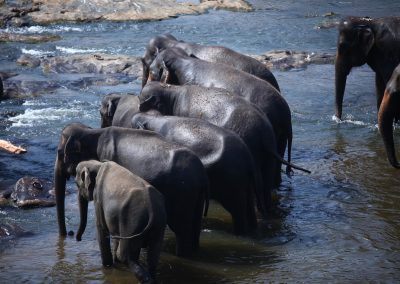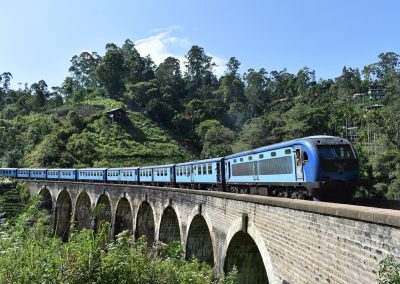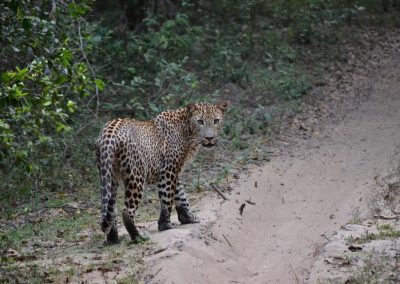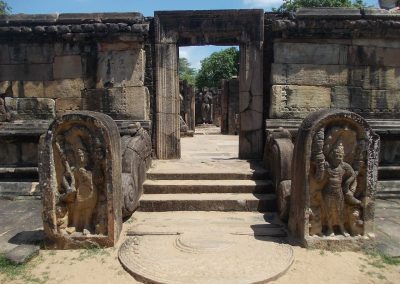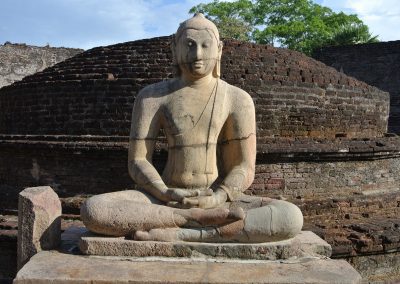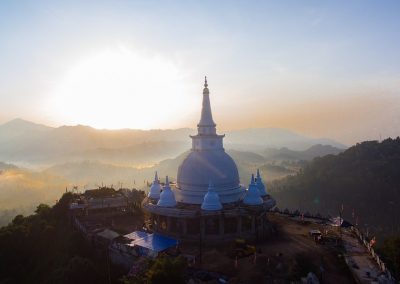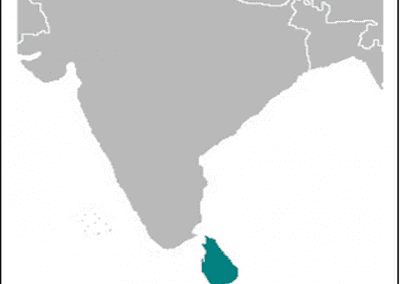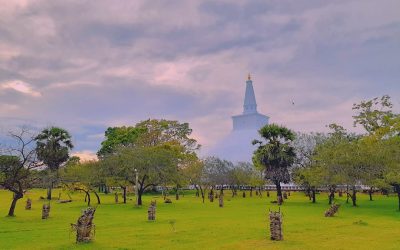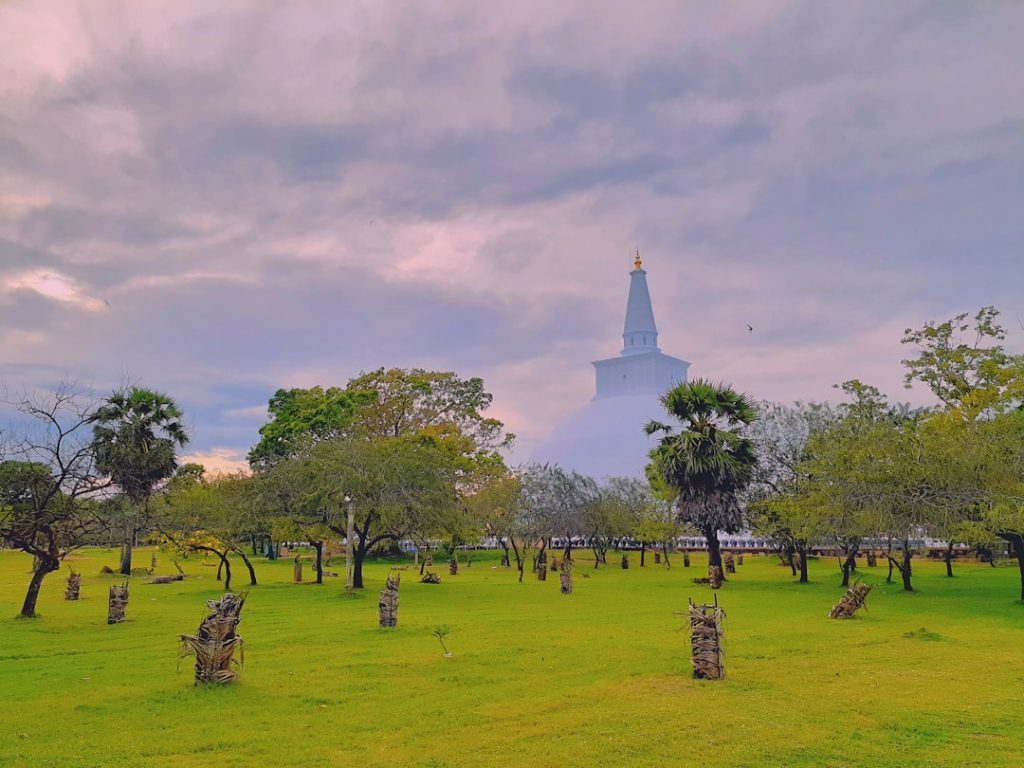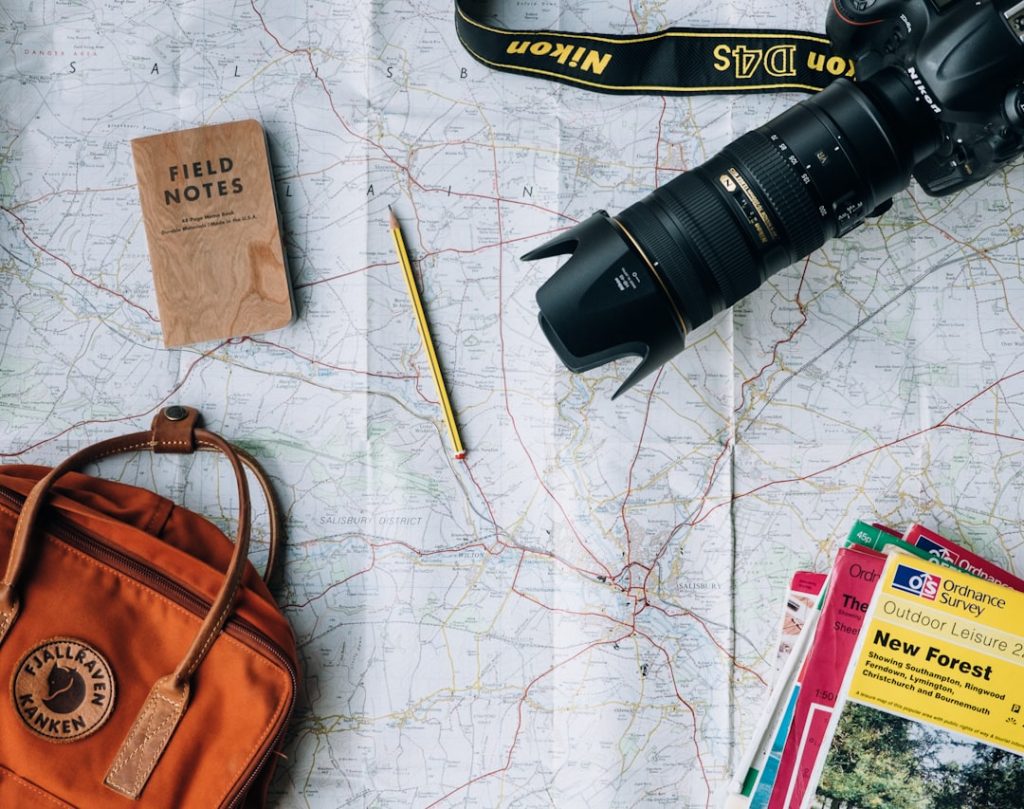Sri Lanka
(Sri Lanka Prajatantrika Samajavadi Janarajaya (Sinhala); Ilangai Jananayaka Socialisa Kudiarasu (Tamil) (Democratic Socialist Republic of Sri Lanka)
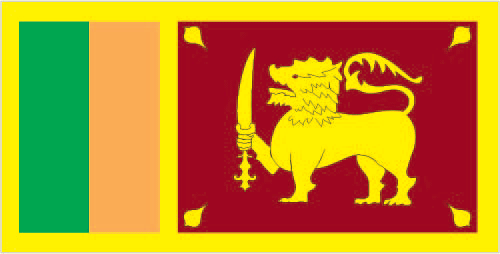



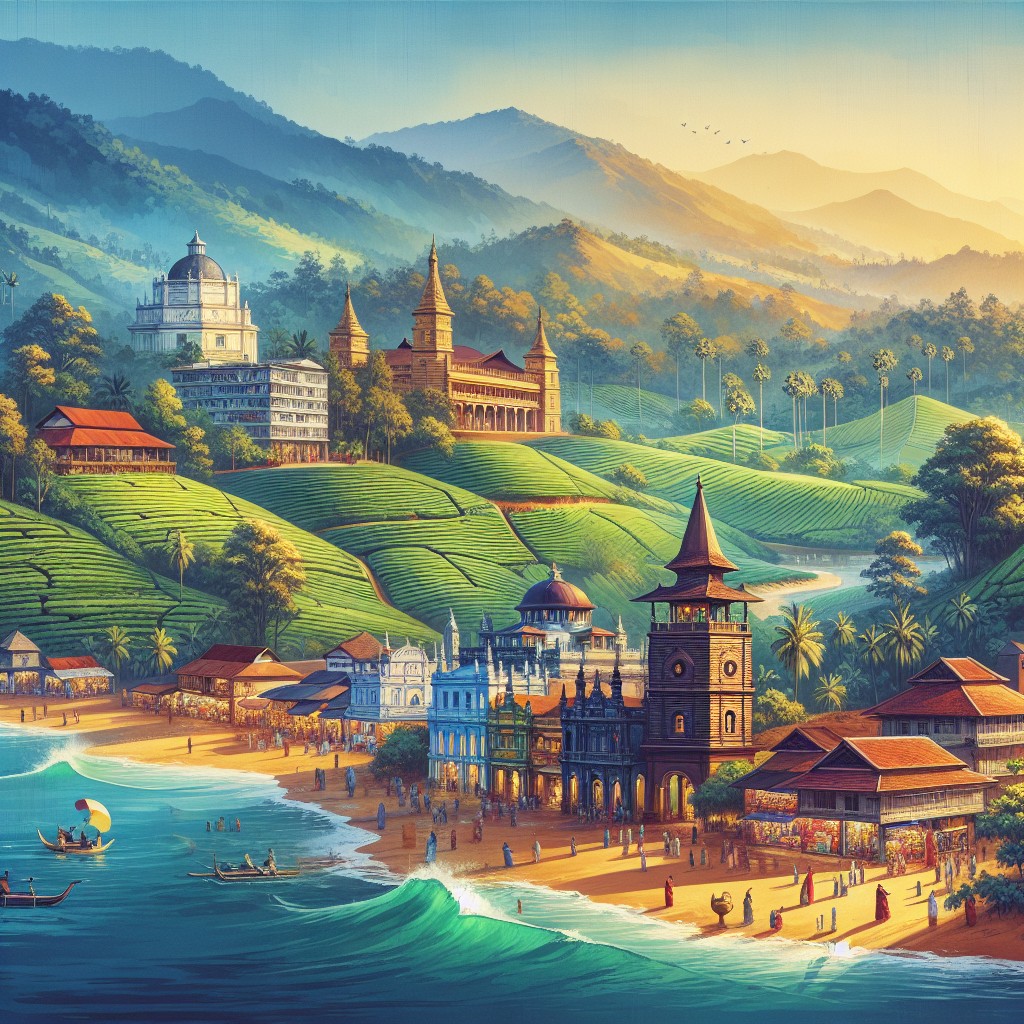
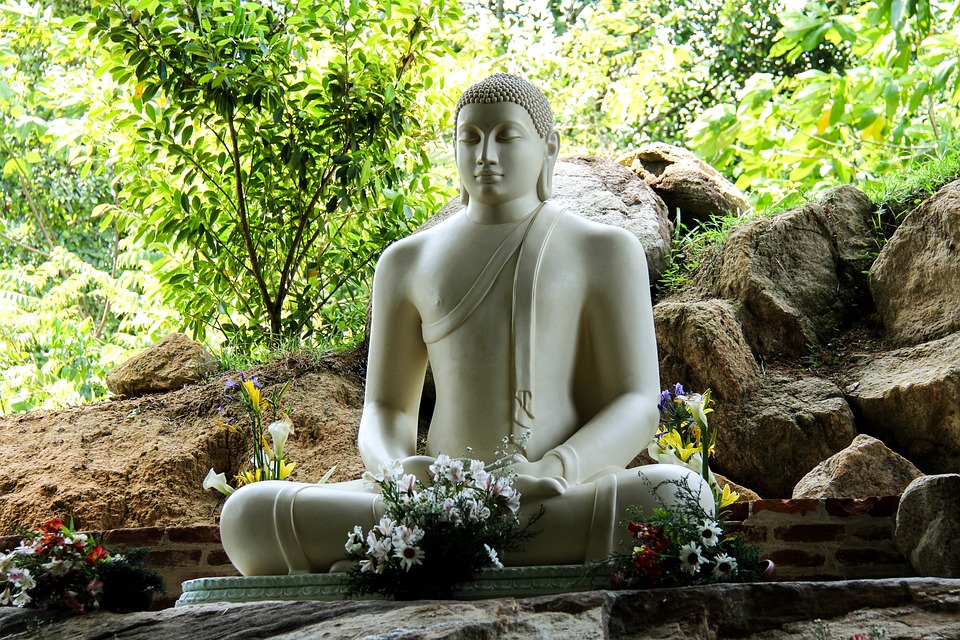
Capital: Colombo (Administrative and judicial); Sri Jayewardenepura Kotte ((Colombo suburb) legislative)
Population (Estimated July 2012): 21,481,334
Area: 65,610km2 or 25,332mi2
Currency: Sri Lankan Rupee (LKR)
Official Language: Sinhala and Tamil
Political Information: Democratic Socialist Republic
Official Religion: No Official Religion
(approximately 69.1% of the population are Buddhist, 7.6% are Muslim, 7.1% are Hindu, 6.2% are Christian and 10% have unspecified religious beliefs)
Highest Mountain: Pidurutalagala at 2,524m or 8,280ft
GDP Official Exchange Rate (OER is more precise at gauging a country’s economic power)
(Estimated 2011): $58.8 billion (US$) or (GBP)
GDP (OER) Per Capita (per member of the population estimated 2011): (US$) or (GBP)
GDP Purchasing Power Parity (PPP is good for gauging living conditions and uthe se of resources but is not as accurate as OER. This data has been calculated based on the sum value of all goods and services produced in the country valued at prices prevailing in the United States)
(Estimated 2011): $116.2 billion (US$) or (GBP)
GDP (PPP) Per Capita (per member of the population estimated 2011): $5,700 (US$) or (GBP)
Time Zone (GMT/UTC): +5:30
Wildlife:
Counties/Provinces/States: 9 provinces; Central, Eastern, North Central, Northern, North Western, Sabaragamuwa, Southern, Uva, Western
Leaders: President Mahinda Rajapakse; Prime Minister D.M. Jayaratne
Additional: Gained independence from the U.K. on the 4th of February 1948.
Sources: CIA World Fact Book, Encyclopaedia Britannica.
Sri Lanka
Sri Lanka, an island nation in the Indian Ocean, is renowned for its rich tapestry of history, culture, and natural beauty. Often referred to as the “Pearl of the Indian Ocean,” this tropical paradise boasts a unique blend of influences from various civilisations, including Indian, Arab, Portuguese, Dutch, and British. The country is characterised by its stunning landscapes, ranging from pristine beaches to lush tea plantations and verdant mountains.
With a population of approximately 22 million, Sri Lanka is home to diverse ethnic groups and religions, each contributing to the island’s vibrant cultural mosaic. The geographical location of Sri Lanka has made it a significant trading hub throughout history. Its strategic position along ancient maritime trade routes facilitated the exchange of goods and ideas, leading to a rich cultural heritage that is evident in its architecture, art, and traditions.
Visitors to Sri Lanka are often captivated by the warmth and hospitality of its people, who take pride in their heritage and are eager to share their stories with those who come to explore their homeland. The island’s allure lies not only in its breathtaking scenery but also in the depth of its cultural experiences, making it a destination that appeals to a wide range of travellers.
Summary
- Sri Lanka is a beautiful island nation in South Asia, known for its rich history, diverse culture, and stunning natural landscapes.
- The history and culture of Sri Lanka is influenced by various civilizations, including the ancient Sinhalese, Portuguese, Dutch, and British colonial periods.
- Sri Lanka boasts a diverse range of natural beauty, from pristine beaches and lush tea plantations to misty mountains and ancient forests.
- The island is home to a wide variety of wildlife and biodiversity, including elephants, leopards, and a plethora of bird species.
- Sri Lanka is famous for its iconic landmarks and attractions, such as the ancient city of Sigiriya, the sacred Temple of the Tooth, and the picturesque train journey through the hill country.
History and Culture of Sri Lanka
The history of Sri Lanka is a complex narrative that spans over 2,500 years, marked by the rise and fall of various kingdoms and empires. The island was first inhabited by the Sinhalese people, who established the Anuradhapura Kingdom around the 3rd century BCE. This period saw the introduction of Buddhism, which became a dominant force in shaping the island’s culture and society.
The ancient city of Anuradhapura is now a UNESCO World Heritage Site, showcasing remarkable architectural achievements such as stupas, monasteries, and palaces that reflect the grandeur of this era. In addition to Buddhism, Sri Lanka has been influenced by Hinduism, particularly in the northern regions where Tamil culture prevails. The coexistence of these two major religions has fostered a unique cultural landscape characterised by festivals, rituals, and artistic expressions that draw from both traditions.
The island’s colonial history further enriched its cultural fabric; Portuguese, Dutch, and British rule introduced new architectural styles, culinary influences, and social structures that continue to shape contemporary Sri Lankan society. Today, the country celebrates its diverse heritage through various art forms, including traditional dance, music, and crafts that reflect its historical journey.
Natural Beauty and Landscapes of Sri Lanka
Sri Lanka’s natural beauty is nothing short of breathtaking, with a diverse range of landscapes that cater to all types of nature enthusiasts. The island is home to stunning beaches that stretch along its coastline, offering golden sands and crystal-clear waters ideal for relaxation and water sports. Popular beach destinations such as Unawatuna and Mirissa attract both local and international tourists seeking sun-soaked days and vibrant nightlife.
The coastal areas are also dotted with charming fishing villages where visitors can experience the local way of life. Moving inland, the landscape transforms dramatically into lush green hills and tea plantations that blanket the central highlands. The town of Nuwara Eliya, often referred to as “Little England,” is famous for its cool climate and picturesque scenery.
Here, visitors can explore sprawling tea estates where the world-renowned Ceylon tea is produced. The region’s rolling hills are interspersed with waterfalls and hiking trails that lead to stunning viewpoints such as Adam’s Peak, a sacred site for multiple religions that offers a challenging yet rewarding trek.
Wildlife and Biodiversity in Sri Lanka
Sri Lanka is often hailed as one of the world’s biodiversity hotspots, boasting an impressive array of flora and fauna that is both unique and diverse. The island’s varied ecosystems range from tropical rainforests to arid plains, providing habitats for numerous species. One of the most notable features of Sri Lanka’s wildlife is its population of elephants; the country is home to the largest population of Asian elephants in the world.
Visitors can witness these majestic creatures in their natural habitat at national parks such as Udawalawe and Minneriya during the famous “Gathering,” where hundreds of elephants congregate around water sources. In addition to elephants, Sri Lanka is also known for its rich birdlife, with over 500 species recorded on the island. Birdwatchers flock to locations like Bundala National Park and Sinharaja Forest Reserve to catch glimpses of endemic species such as the Sri Lankan blue magpie and the red-faced malkoha.
The country’s marine biodiversity is equally impressive; snorkelling and diving enthusiasts can explore vibrant coral reefs teeming with colourful fish off the coast of Hikkaduwa or Pigeon Island. Conservation efforts are ongoing to protect these precious ecosystems from threats such as habitat loss and climate change.
Famous Landmarks and Attractions in Sri Lanka
Sri Lanka is replete with landmarks that reflect its rich history and cultural heritage. One of the most iconic sites is Sigiriya Rock Fortress, a UNESCO World Heritage Site that rises dramatically from the surrounding plains. This ancient citadel features stunning frescoes and an impressive mirror wall that once reflected the images of visitors.
Climbing to the summit rewards adventurers with panoramic views of the lush landscape below. Another significant attraction is the ancient city of Polonnaruwa, which served as the capital during the 11th to 13th centuries. Here, visitors can explore well-preserved ruins such as the Gal Vihara rock temple, which houses magnificent Buddha statues carved from granite.
The sacred city of Kandy is also a must-visit destination; it is home to the Temple of the Tooth Relic, one of Buddhism’s most revered sites. The annual Esala Perahera festival held in Kandy showcases traditional dance performances and a grand procession featuring beautifully adorned elephants.
Traditional Cuisine and Culinary Delights of Sri Lanka
Rice and Curry: The Cornerstone of Sri Lankan Cuisine
Rice and curry form the cornerstone of most meals, with an array of curries made from vegetables, lentils, fish, or meat served alongside fragrant rice. The use of spices such as cinnamon, cardamom, and cloves adds depth and complexity to dishes, making each meal a sensory delight.
Street Food Favourites
One popular dish is “kottu roti,” a street food favourite made from chopped roti mixed with vegetables, eggs, or meat stir-fried on a hot griddle. In addition to savoury dishes, Sri Lanka offers an array of sweet treats that are equally enticing. “Watalappan,” a traditional coconut custard pudding spiced with jaggery and cardamom, is a beloved dessert often enjoyed during festive occasions.
Communal Dining Experiences
Street food culture thrives in cities like Colombo and Galle; vendors serve up snacks such as “isso vadei” (prawn fritters) and “pol sambol” (a spicy coconut relish) that tantalise taste buds with their bold flavours. Culinary experiences in Sri Lanka are not just about food; they often involve communal dining practices that foster connections among family and friends.
Festivals and Celebrations in Sri Lanka
Festivals play an integral role in Sri Lankan culture, reflecting the island’s rich tapestry of religious beliefs and traditions. One of the most significant celebrations is Vesak Poya, which commemorates the birth, enlightenment, and death of Buddha. During this time, homes are adorned with lanterns and flags while temples host special ceremonies.
The atmosphere is imbued with spirituality as devotees engage in acts of merit-making through offerings and charitable deeds. Another prominent festival is Diwali, celebrated by the Hindu community across the island. Known as the Festival of Lights, Diwali signifies the victory of light over darkness and good over evil.
Homes are illuminated with oil lamps and colourful rangoli designs adorn doorways as families come together to share sweets and exchange gifts. Additionally, Sinhala and Tamil New Year marks a time for family reunions and traditional games; it is celebrated with feasting on special dishes like “kiribath” (milk rice) while engaging in age-old customs that strengthen community bonds.
Travel Tips and Recommendations for Visiting Sri Lanka
When planning a trip to Sri Lanka, it is essential to consider several factors to ensure a smooth experience. The best time to visit largely depends on which part of the island one intends to explore; generally speaking, December to March is ideal for coastal areas while April to September suits the central highlands. Travellers should also be mindful of local customs; dressing modestly when visiting religious sites is crucial to show respect for cultural norms.
Transportation options within Sri Lanka are varied; while public buses offer an affordable means to travel between cities, hiring a private driver can provide greater flexibility for exploring remote areas at one’s own pace. Additionally, engaging with local guides can enhance one’s understanding of historical sites and cultural practices. It is advisable to sample local cuisine but also be cautious about food hygiene; opting for well-reviewed restaurants or street vendors known for their cleanliness can help avoid any health issues during your stay.
In conclusion, Sri Lanka presents an enchanting blend of history, culture, natural beauty, wildlife diversity, culinary delights, vibrant festivals, and welcoming hospitality that captivates all who visit its shores. Each aspect contributes to an unforgettable experience that lingers long after leaving this remarkable island nation.
One interesting article related to Sri Lanka can be found in the Array section. This article discusses the cultural heritage and historical significance of Sri Lanka, highlighting the country’s rich traditions and diverse population. It delves into the unique customs and practices that have been passed down through generations, shedding light on the vibrant tapestry of Sri Lankan society. Readers can gain a deeper understanding of this fascinating country and its people by exploring this insightful article.
FAQs
What is the official name of Sri Lanka?
The official name of the country is the Democratic Socialist Republic of Sri Lanka.
What is the capital city of Sri Lanka?
The capital city of Sri Lanka is Sri Jayawardenepura Kotte, while the largest city is Colombo.
What is the population of Sri Lanka?
As of 2021, the population of Sri Lanka is estimated to be around 21 million people.
What is Sri Lanka’s official language?
The official languages of Sri Lanka are Sinhala and Tamil.
What is the currency used in Sri Lanka?
The currency used in Sri Lanka is the Sri Lankan Rupee (LKR).
What is the climate like in Sri Lanka?
Sri Lanka has a tropical climate, with distinct dry and wet seasons. The average temperature ranges from 25°C to 30°C throughout the year.
What are the major religions in Sri Lanka?
The major religions in Sri Lanka are Buddhism, Hinduism, Islam, and Christianity.
What are the popular tourist attractions in Sri Lanka?
Some popular tourist attractions in Sri Lanka include the ancient city of Sigiriya, the Temple of the Tooth in Kandy, the beaches of Bentota and Mirissa, and the tea plantations in Nuwara Eliya.
What is the cuisine of Sri Lanka like?
Sri Lankan cuisine is known for its use of spices and coconut milk. Some popular dishes include rice and curry, hoppers, kottu, and string hoppers.
Political Boundaries of Sri Lanka: Provinces, Districts, or Historical Boundaries.
Political boundaries serve as the framework within which a nation operates, delineating areas of governance, administration, and jurisdiction. In Sri Lanka, a country with a rich tapestry of ethnicities, cultures, and histories, these boundaries are not merely lines on a map; they are deeply intertwined with the identity and political dynamics of its people. The island nation, located off the southern coast of India, has a complex political landscape shaped by its colonial past, ethnic diversity, and ongoing socio-political challenges. Understanding the political boundaries of Sri Lanka requires an exploration of its provinces and districts, as well as the historical context that has influenced their formation. The political boundaries in Sri Lanka have evolved over centuries, reflecting changes in governance, demographic shifts, and socio-political movements. The current administrative structure is divided into nine provinces, each further subdivided into districts. This division is not only administrative but also reflects the cultural and ethnic diversity of the population. The Sinhalese, Tamils, and Muslims are the three major ethnic groups in Sri Lanka, and their distribution across the provinces and districts has significant implications for political representation and resource allocation. As such, the political boundaries in Sri Lanka are a critical aspect of understanding the nation’s governance and the challenges it faces. Summary Sri Lanka is divided into 9 provinces, each with its own unique political boundaries and administrative structure. The provinces are further divided into 25 districts, each with its own distinct geographical and administrative features. The historical boundaries of Sri Lanka have evolved over time, influenced by colonial rule and internal conflicts. A comparison of provinces, districts, and historical boundaries...
Climate Zones of Sri Lanka: Different Climate Regions Of Sri Lanka
Sri Lanka, an island nation located in the Indian Ocean, is renowned for its diverse climate zones, which are shaped by a combination of geographical features, topography, and monsoonal influences. The island’s climate is predominantly tropical, but it exhibits a remarkable variety of microclimates due to its varied elevation and proximity to the sea. Understanding these climate zones is crucial for various sectors, including agriculture, tourism, and urban planning, as they dictate the types of crops that can be cultivated, the best times for travel, and the infrastructure needed to support local populations. The climate of Sri Lanka can be broadly categorised into five distinct zones: the tropical rainforest climate, tropical monsoon climate, semi-arid climate, mountain climate, and coastal climate. Each of these zones has unique characteristics that influence the flora and fauna found within them, as well as the lifestyle of the inhabitants. The interplay between the monsoon winds and the geographical features of the island creates a complex climatic tapestry that is both fascinating and essential for understanding the ecological and socio-economic dynamics of Sri Lanka. Summary Sri Lanka has a diverse range of climate zones, each with its own unique characteristics and weather patterns. The Tropical Rainforest Climate Zone in Sri Lanka is characterized by high temperatures, heavy rainfall, and lush vegetation. The Tropical Monsoon Climate Zone experiences distinct wet and dry seasons, with heavy rainfall during the monsoon period. The Semi-arid Climate Zone in Sri Lanka has low rainfall and high temperatures, leading to dry and arid conditions. The Mountain Climate Zone in Sri Lanka is cooler and experiences more rainfall due to its higher...
Terrain and Topography of Sri Lanka: mountains, valleys, and plains.
Sri Lanka is home to a remarkable array of mountain ranges that contribute significantly to the island’s geographical diversity. The central highlands, often referred to as the “Hill Country,” are dominated by the towering peaks of the Knuckles Mountain Range and the Adam’s Peak, also known as Sri Pada. These mountains not only provide breathtaking vistas but also serve as vital watersheds for the surrounding regions. The Knuckles Range, with its rugged terrain and rich biodiversity, is a UNESCO World Heritage Site, recognised for its unique flora and fauna. The peaks here rise dramatically, with some reaching altitudes of over 2,000 metres, creating a striking contrast to the low-lying coastal areas. The mountain ranges of Sri Lanka are not merely geological formations; they are steeped in cultural significance and history. For centuries, these highlands have been a refuge for various communities, including the indigenous Veddah people and later settlers who sought the cooler climate and fertile soil for agriculture. The mountains are also interwoven with local legends and spiritual beliefs, particularly Adam’s Peak, which is revered by multiple religions, including Buddhism, Hinduism, and Islam. Pilgrims from all walks of life ascend this sacred mountain, especially during the pilgrimage season, creating a vibrant tapestry of cultural exchange and spiritual devotion. Summary Sri Lanka is home to diverse mountain ranges, including the central highlands and the Knuckles Mountain Range. The lush valleys and plateaus of Sri Lanka, such as the Horton Plains and the Nuwara Eliya region, are known for their stunning natural beauty and rich biodiversity. The low-lying plains and coastal areas of Sri Lanka, including the Jaffna Peninsula and...
History of Sri Lanka
The history of what is now known as Myanmar, or Burma, is rich and complex, with its roots tracing back to early settlements that emerged in the region thousands of years ago. Archaeological evidence suggests that the area was inhabited as far back as the Stone Age, with various tribes and communities establishing themselves along the fertile plains of the Irrawaddy River. These early inhabitants engaged in agriculture, hunting, and gathering, laying the groundwork for more complex societies. By the first millennium BCE, the region saw the rise of several significant kingdoms, including the Pyu city-states, which were instrumental in the development of trade routes connecting India and China. The Pyu people were known for their advanced urban planning and sophisticated irrigation systems, which allowed them to cultivate rice and other crops efficiently. Their cities, such as Sri Ksetra and Beikthano, became bustling centres of commerce and culture. The influence of Indian culture was particularly pronounced during this period, as Buddhism began to spread into the region, shaping the religious landscape. The establishment of these early kingdoms set the stage for the emergence of more powerful dynasties, such as the Mon and Bamar kingdoms, which would dominate the region in subsequent centuries. Summary Early settlements in the region date back to ancient times, with the establishment of early kingdoms and city-states. Colonial rule by European powers, including the British, had a significant impact on the region’s history and eventual struggle for independence. Ancient civilizations in the region, such as the Indus Valley and Mauryan Empire, played a key role in shaping trade and cultural exchange. Buddhism spread throughout the...
Natural Resources of Sri Lanka: Where Natural Resources are Located in Sri Lanka
Sri Lanka, an island nation located in the Indian Ocean, is renowned for its rich tapestry of natural resources that contribute significantly to its economy and cultural heritage. The country’s diverse geography, ranging from coastal plains to mountainous regions, has endowed it with a variety of resources that are vital for its development. The interplay of climate, topography, and ecosystems has resulted in a wealth of minerals, agricultural products, forests, and water bodies, each playing a crucial role in the livelihoods of its people. Understanding these resources is essential not only for economic growth but also for the sustainable management of the environment. The significance of Sri Lanka‘s natural resources extends beyond mere economic value; they are integral to the identity and culture of the nation. The agricultural practices rooted in the fertile plains and the artisanal fishing traditions along the coast reflect a deep connection between the people and their environment. However, as the country progresses towards industrialisation and urbanisation, the challenge lies in balancing development with conservation. This article delves into the various natural resources of Sri Lanka, exploring their potential, current utilisation, and the pressing need for sustainable management practices. Summary Sri Lanka is rich in natural resources, including minerals, agriculture, forests, water, energy, and coastal areas. The country’s mineral resources include graphite, ilmenite, and gemstones, making it a significant player in the global mining industry. Sri Lanka’s agricultural resources are diverse, with different regions specializing in tea, rubber, coconut, and spices production. The country’s forests are home to a wide range of biodiversity hotspots, making conservation efforts crucial for sustainable management. Sri Lanka’s water resources...
Cultural or Historical Sites of Sri Lanka: Important Cultural Landmarks or Historical Sites In Sri Lanka
Sri Lanka, an island nation nestled in the Indian Ocean, boasts a rich tapestry of cultural and historical heritage that spans over two millennia. Renowned for its stunning landscapes, diverse ecosystems, and vibrant traditions, the country is also home to a plethora of ancient sites that reflect its storied past. From the remnants of ancient kingdoms to sacred temples and colonial forts, these sites offer a glimpse into the island’s evolution through time. The UNESCO World Heritage Sites scattered...
Population Density of Sri Lanka
Population density is a critical demographic metric that reflects the number of individuals living per unit area, often expressed in persons per square kilometre. In the context of Sri Lanka, an island nation located in the Indian Ocean, population density has significant implications for social, economic, and environmental dynamics. As of the latest estimates, Sri Lanka has a population density of approximately 346 individuals per square kilometre, making it one of the more densely populated countries in South Asia. This figure is not merely a statistic; it encapsulates the complex interplay between human habitation, resource allocation, and land use. The geographical layout of Sri Lanka, with its diverse landscapes ranging from coastal plains to mountainous regions, further complicates the understanding of population density. Urban areas, particularly the capital city of Colombo and its suburbs, exhibit markedly higher densities compared to rural regions. This disparity raises important questions about the distribution of resources, infrastructure development, and the overall quality of life for residents across different areas. Understanding population density in Sri Lanka is essential for policymakers and planners as they navigate the challenges and opportunities presented by a growing population. Summary Sri Lanka has a high population density, with over 21 million people living in a relatively small area of land. Factors affecting population density in Sri Lanka include natural resources, economic opportunities, and historical settlement patterns. The urban population in Sri Lanka is increasing, leading to challenges in providing infrastructure and services to meet the needs of a growing population. High population density in Sri Lanka puts pressure on infrastructure and services, leading to challenges in providing adequate housing,...
Discover the Hidden Gems of Sri Lanka: A Journey Through the Pearl of the Indian Ocean
Sri Lanka, often referred to as the “Pearl of the Indian Ocean,” is a small island nation located in South Asia. It is known for its stunning natural beauty, rich history, and vibrant culture. The country is surrounded by the Indian Ocean, which gives it a diverse range of landscapes, from pristine beaches to lush tea plantations and misty mountains. With a history dating back over 2,500 years, Sri Lanka has a wealth of ancient ruins and temples that showcase its cultural heritage. The country has been influenced by various civilizations throughout its history, including the Sinhalese, Tamils, Portuguese, Dutch, and British. This diverse mix of cultures has shaped Sri Lanka into a unique destination with a rich tapestry of traditions, customs, and cuisines. Sri Lanka is a must-visit destination for travelers seeking a blend of natural beauty, cultural heritage, and warm hospitality. Whether you are exploring ancient cities and temples, hiking through tea plantations, spotting wildlife in national parks, relaxing on pristine beaches, or indulging in delicious cuisine, Sri Lanka offers something for everyone. Summary Sri Lanka is known as the Pearl of the Indian Ocean. The Cultural Triangle offers a chance to explore ancient cities and temples. The Hill Country is home to tea plantations and scenic landscapes. Wildlife sanctuaries provide an opportunity to experience Sri Lanka’s biodiversity. Sri Lanka’s beaches offer pristine coastlines and coral reefs for relaxation. The Cultural Triangle: Exploring Sri Lanka’s Ancient Cities and Temples The Cultural Triangle is a region in Sri Lanka that encompasses the ancient cities of Anuradhapura, Polonnaruwa, and Sigiriya. These cities are UNESCO World Heritage Sites and offer...


